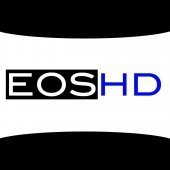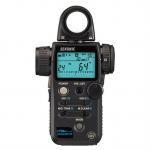-
Posts
8,012 -
Joined
-
Last visited
Reputation Activity
-
 kye got a reaction from John Matthews in Panasonic G9 Mark II. I was wrong
kye got a reaction from John Matthews in Panasonic G9 Mark II. I was wrong
Welcome back!
Can you tell me your name? Where are we? What year is it?
Good, good...
You've been in a DOF-induced coma for the last 7 years. We'll contact your families and let them know you've woken up - they'll be very happy to see you!
-
 kye got a reaction from Andrew - EOSHD in Panasonic G9 Mark II. I was wrong
kye got a reaction from Andrew - EOSHD in Panasonic G9 Mark II. I was wrong
Welcome back!
Can you tell me your name? Where are we? What year is it?
Good, good...
You've been in a DOF-induced coma for the last 7 years. We'll contact your families and let them know you've woken up - they'll be very happy to see you!
-
 kye got a reaction from Davide DB in Panasonic G9 Mark II. I was wrong
kye got a reaction from Davide DB in Panasonic G9 Mark II. I was wrong
Welcome back!
Can you tell me your name? Where are we? What year is it?
Good, good...
You've been in a DOF-induced coma for the last 7 years. We'll contact your families and let them know you've woken up - they'll be very happy to see you!
-
 kye got a reaction from eatstoomuchjam in Panasonic G9 Mark II. I was wrong
kye got a reaction from eatstoomuchjam in Panasonic G9 Mark II. I was wrong
Welcome back!
Can you tell me your name? Where are we? What year is it?
Good, good...
You've been in a DOF-induced coma for the last 7 years. We'll contact your families and let them know you've woken up - they'll be very happy to see you!
-
 kye reacted to FHDcrew in Panasonic G9 Mark II. I was wrong
kye reacted to FHDcrew in Panasonic G9 Mark II. I was wrong
I know I can finally breathe haha. I’ve learned full frame is NOT the savior of the world. Shocking really!
-
 kye reacted to Emanuel in 2025 camera rankings new vs used
kye reacted to Emanuel in 2025 camera rankings new vs used
Ignore it today, it's stuck in the past.
E. :- )
-
 kye got a reaction from FHDcrew in Panasonic G9 Mark II. I was wrong
kye got a reaction from FHDcrew in Panasonic G9 Mark II. I was wrong
Welcome back!
Can you tell me your name? Where are we? What year is it?
Good, good...
You've been in a DOF-induced coma for the last 7 years. We'll contact your families and let them know you've woken up - they'll be very happy to see you!
-
 kye got a reaction from John Matthews in 2025 camera rankings new vs used
kye got a reaction from John Matthews in 2025 camera rankings new vs used
It's sad to hear this - the S9 seems to suffer with the same cost-cutting mechanisms of all smaller cameras.
It's funny how consumer electronics mostly tend to charge a premium for smaller devices and yet when it comes to cameras the industry seems to regard small as being cheap and large as being professional.
-
 kye got a reaction from Emanuel in 2025 camera rankings new vs used
kye got a reaction from Emanuel in 2025 camera rankings new vs used
The iPhone 17 Pro selfie camera has a square sensor, and when using the default camera app there's a button that swaps between it recording a 9:16 video and a 16:9 video.
I don't know if you'd rate it as a "real" camera or not though!
-
 kye reacted to Davide DB in "Left-handed Girl" anyone?
kye reacted to Davide DB in "Left-handed Girl" anyone?
I saw this film in the cinema few days ago and I wanted to share a few short thoughts on this work, which I found extremely interesting for the balance between neorealist aesthetics and the use of natural light in complex urban environments like the markets of Taipei. The composition of the image and the dynamism of the camera manage to give a rare sense of immersion, keeping a consistent style for the whole film. It is a remarkable example of how cinematic language can work without huge technical equipment: in fact, the film was shot entirely with an iPhone.
The choice of the iPhone 13 Pro Max was mainly due to the need to move with extreme agility and discretion inside the night markets of Taipei, contexts where a traditional crew with bulky cameras would have inevitably attracted attention and compromised the spontaneity of the scenes. By working with such a common and non-invasive tool, the director managed to adopt an almost documentary-like approach.
Reading several articles and listening some interviews, the director gave several details: The film's aesthetics were built around the use of four iPhone 13 Pro Max cameras, integrated into a workflow that used the Beastgrip Pro system as the base for the rig. To achieve the characteristic anamorphic look and typical horizontal flares, the production used a prototype anamorphic lens from Beastgrip, paired with Black Forest diffusion filters to reduce the excessive digital sharpness of the sensor and give a more organic feel to the highlights of the night markets. On the software side, the shooting was managed entirely through the FiLMiC Pro app using the 4K Lux mode, a choice that allowed for a file with a wider dynamic range, which was later processed in post-production through advanced color correction in DaVinci Resolve.
Seeing some BTS shots, this was really a run&gun configuration. An iPhone and a Gimbal et voila!
https://thefilmstage.com/left-handed-girl-director-shih-ching-tsou-on-collaborating-with-sean-baker-and-seeing-the-world-through-a-childs-eyes/
-
 kye got a reaction from MrSMW in 2025 camera rankings new vs used
kye got a reaction from MrSMW in 2025 camera rankings new vs used
It's sad to hear this - the S9 seems to suffer with the same cost-cutting mechanisms of all smaller cameras.
It's funny how consumer electronics mostly tend to charge a premium for smaller devices and yet when it comes to cameras the industry seems to regard small as being cheap and large as being professional.
-
 kye reacted to eatstoomuchjam in Do We Really Only Need Three Cameras? (In Theory)
kye reacted to eatstoomuchjam in Do We Really Only Need Three Cameras? (In Theory)
Hezekiah Northrup is somewhere in the background too. He's just hard to make out because the photo was taken just a few weeks after he invented Bokeh.
-
 kye reacted to BTM_Pix in Do We Really Only Need Three Cameras? (In Theory)
kye reacted to BTM_Pix in Do We Really Only Need Three Cameras? (In Theory)
I think it might actually be Cam Maquis, who later became a leading part of the French Resistance movement.
In the middle row I think I can see Hugo Knows Foto with his undershirt on which his wife has embroidered “I Shoot Daguerreotype“
-
 kye reacted to Andrew - EOSHD in Panasonic G9 Mark II. I was wrong
kye reacted to Andrew - EOSHD in Panasonic G9 Mark II. I was wrong
It turns out I am a bit wrong.
... That Micro Four Thirds was dead. Well near me, the G9 II came down to a much more sensible 1299 so I thought I'd give it a try.
This thing... oh my gawd.
Feel like putting the rest of my gear in the bin!
This little box of joy is pure art in the handheld 4K/120p mode (and also in 5K open gate). The colour science, slow mo and IBIS are so, so good. The new GH7 sensor is quite something. Beautiful filmic quality to it.
And I thought IBIS was good on the full frame Panasonic cameras or Olympus OM-1 but this is taking the biscuit now.
You can just stand there and get a completely static frame especially in 120fps. I keep putting shutter at 1 second for long expose stills, pin sharp...The first camera that can really lay claim to being a tripod killer, in my view.
Then there's the image processing... It totally defies the price. The new sensor just looks so clean in low light and dynamic range is fantastic. The real-time LUTs look stunning here. No other Micro Four Thirds camera has nearly as good colour processing (except the more expensive GH7), so in this sense I prefer it even to the Olympus OM-1 with the lovely Olympus skin tones.
In some ways it is better than a flagship $4k full frame cam... I am not joking.
Not missing a full frame sensor that much to be honest. It has the dynamic range, the low light, the resolution, and with a fast enough lens... the full frame look as well. The Metabones Speed Booster 0.64x fits without scraping the sensor-box.
Also, the EVF is enormous and totally defies the price.
Criticisms? Autofocus is very lens dependant - it's still a bit rubbish with the older stuff and adapters. Also no ProRes LT like the X-H2... With two SD card slots, it limits you only to 1080p in ProRes mode which is a bit silly... but the high-res stuff is available if you plug in an SSD via USB. GH7 has an advantage there for sure.
But in plain old 10bit H.265 the image is superb.
I think this body design suits the smaller lenses too... You know I'm not the greatest fan of the S5 II body design, well it is growing on me here... Micro Four Thirds and small stuff seems to go well with the G9 II / S5 II body design. It starts to make more sense. The sharp angles cut in less, camera as a whole is lighter, the grip is sufficient for everything and it's got that "GH2 feel" when you put the tiny 20mm F1.7 pancake on there whereas the S5 II with the larger lenses doesn't have that same charm to it.
I am inclined to say Micro Four Thirds LOOK is back too... It's an antidote to predominance of a super shallow depth of field in commercial work and Netflix.
It really makes me want to fully commit again to the system as it just does SO MUCH, far more than any full frame camera remotely affordable.
It does more than a Sony a1 II FFS!
-
 kye reacted to Ty Harper in 2025 camera rankings new vs used
kye reacted to Ty Harper in 2025 camera rankings new vs used
I work on a daily live national pop culture program - and while we are theoretically a terrestrial radio program first and foremost, realistically speaking we are a multi-platform program that is consumed as a traditional radio show, a podcast on Apple, a video podcast on Spotify/Youtube, and there are a lot of people who ONLY know our program via the video reels we post on our IG account. The program is captured with 3 Sony PTZs, and guests joining us via Zoom are patched into the convo by our digital producer who is also our live switcher, who is also framing each person (up to four guests, including the host) for our Youtube/Spotify podcasts AND our IG reels... so yes, Open Gate would prob be a helpful option for our digital producer/switcher/editor to have in post.
-
 kye reacted to Geoff_L in Do We Really Only Need Three Cameras? (In Theory)
kye reacted to Geoff_L in Do We Really Only Need Three Cameras? (In Theory)
Hm, it seems to me rather like Jean-René douze-fps but I could be wrong!
-
 kye reacted to MrSMW in Do We Really Only Need Three Cameras? (In Theory)
kye reacted to MrSMW in Do We Really Only Need Three Cameras? (In Theory)
The bottom right dude, is that the notoriously dageurreotype-shy, Louis 'Rolling' Shutter?
-
 kye reacted to eatstoomuchjam in The Aesthetic (part 2)
kye reacted to eatstoomuchjam in The Aesthetic (part 2)
My first thought was "I bet Rosco or Lee have something like that, but maybe not in the right size" and after a few minutes of searching, I found something from Rosco that's like that, but not in the right size.
https://www.adorama.com/ro1081102024.html
So there's hope, maybe that or searching for "graduated center filter gel" or similar would get you closer!
Another thought would be to make something like the soft focus disc for an some types of large format soft focus lens - some examples here: https://www.largeformatphotography.info/forum/showthread.php?49632-Recommendation-for-Soft-Focus-lenses-for-4x5/page2
It wouldn't be exactly the same as varying the opacity of the film like in a gradient, but you could make an aperture that has a hard edge in the center with the edges around it perforated, but with the density of perforation decreasing toward the edges. It'd almost certainly introduce some interesting aberrations.
-
 kye got a reaction from Geoff_L in Do We Really Only Need Three Cameras? (In Theory)
kye got a reaction from Geoff_L in Do We Really Only Need Three Cameras? (In Theory)
I'm pretty sure that in 1927, as photography became more accessible, all the great scientific and mathematical minds of the time converged in Paris and after a fortnight of rigorous collaboration they proved mathematically that one can, in fact, never have too many cameras.
-
 kye reacted to newfoundmass in 2025 camera rankings new vs used
kye reacted to newfoundmass in 2025 camera rankings new vs used
I'd still put the Lumix S5 as one of the best values when it comes to used full frame cameras. I know with the S9 being so cheap, and having notable benefits like better AF, some might opt to go for that instead but I think the image quality is nicer, and I prefer the size for handheld shooting, especially with larger lenses. It's also compatible with the XLR1.
-
 kye got a reaction from ac6000cw in 2025 camera rankings new vs used
kye got a reaction from ac6000cw in 2025 camera rankings new vs used
I don't really know what to say....
The post I was replying to said they hadn't seen 9:16 displays in public so I shared some images.
The fact you haven't experienced the need to deliver 4K 9:16 videos doesn't mean other people haven't.
Why is everyone so interested in being an expert about what people they've never met are required to deliver for companies they've never heard of in other countries they've never visited?
-
 kye reacted to newfoundmass in 2025 camera rankings new vs used
kye reacted to newfoundmass in 2025 camera rankings new vs used
Go to Times Square or Tokyo and you'll see endless 9:16 screens playing (presumably 4K or higher) video. They're massive screens.
We're kinda derailing this thread, but it's silly to argue that open gate isn't a benefit for a lot of people. It's cool if you don't need it, but others do.
-
 kye got a reaction from j_one in 2025 camera rankings new vs used
kye got a reaction from j_one in 2025 camera rankings new vs used
I don't really know what to say....
The post I was replying to said they hadn't seen 9:16 displays in public so I shared some images.
The fact you haven't experienced the need to deliver 4K 9:16 videos doesn't mean other people haven't.
Why is everyone so interested in being an expert about what people they've never met are required to deliver for companies they've never heard of in other countries they've never visited?
-
 kye got a reaction from newfoundmass in 2025 camera rankings new vs used
kye got a reaction from newfoundmass in 2025 camera rankings new vs used
I don't really know what to say....
The post I was replying to said they hadn't seen 9:16 displays in public so I shared some images.
The fact you haven't experienced the need to deliver 4K 9:16 videos doesn't mean other people haven't.
Why is everyone so interested in being an expert about what people they've never met are required to deliver for companies they've never heard of in other countries they've never visited?
-
 kye reacted to BTM_Pix in Do We Really Only Need Three Cameras? (In Theory)
kye reacted to BTM_Pix in Do We Really Only Need Three Cameras? (In Theory)
All paid for by Pathé and everyone on the trip etched postcards home saying “Game Changer”.






